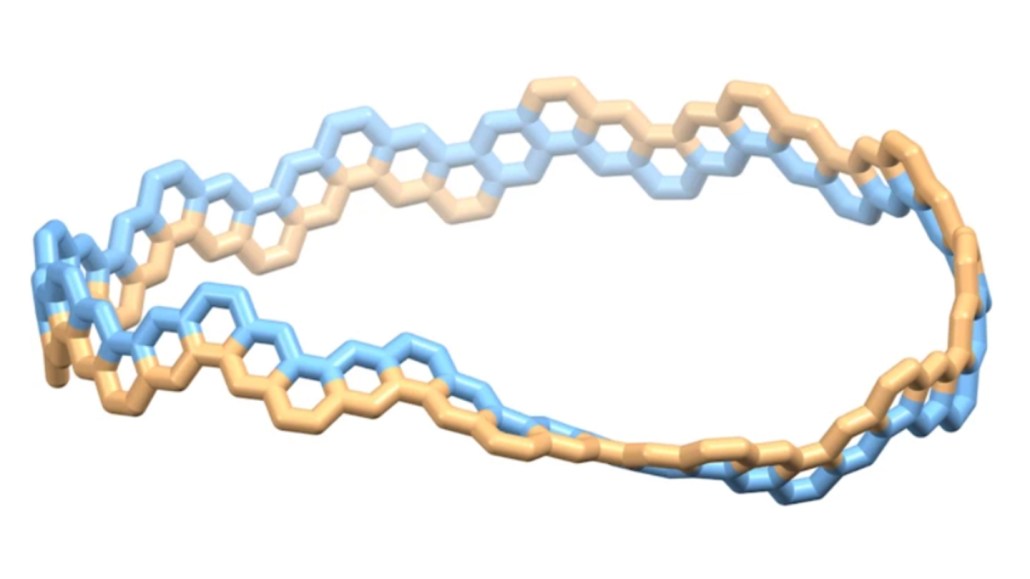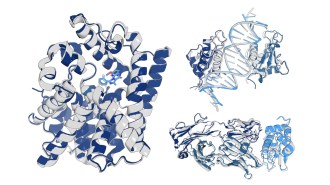Scientists made a Möbius strip out of a tiny carbon nanobelt
The new twist on nanocarbon joins other structures including nanotubes and buckyballs

A band of carbon atoms (located at the corner of each hexagon in this illustration) twists to form a tiny Möbius strip. Colors highlight the twisting behavior of the band, with the yellow flipping from one side to the other.
Y. Segawa et al/Nature Synthesis 2022






